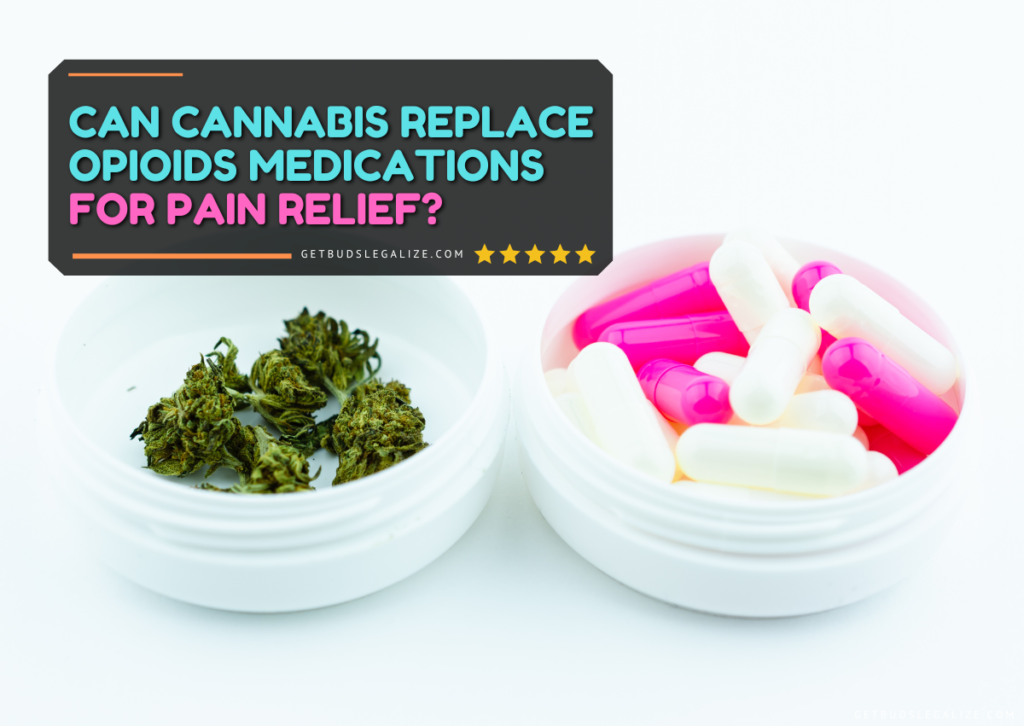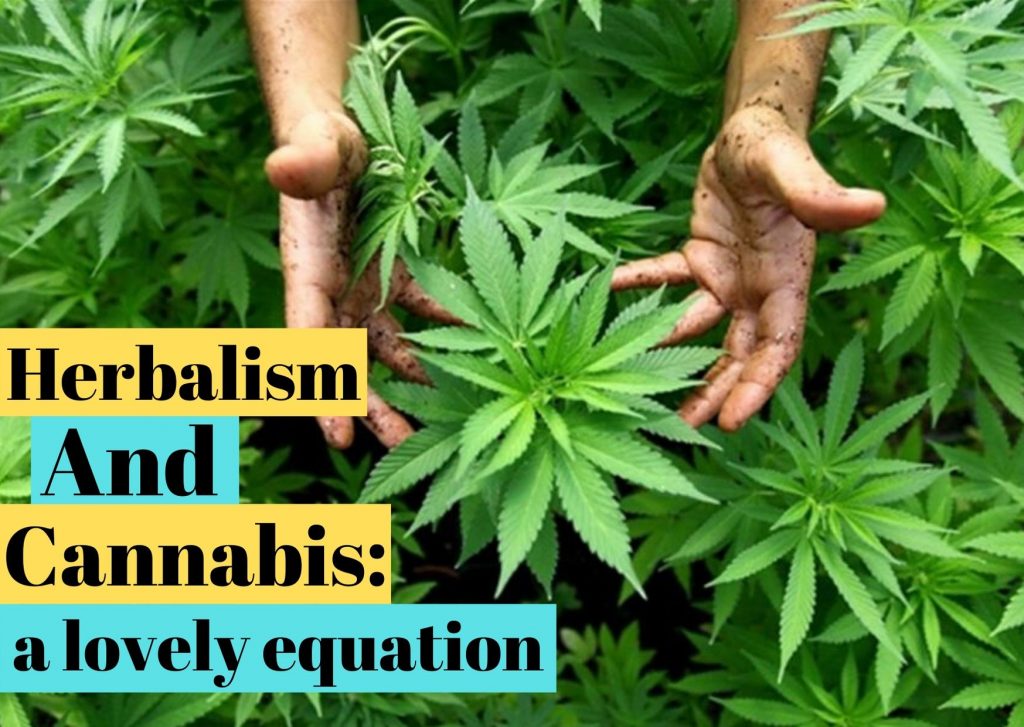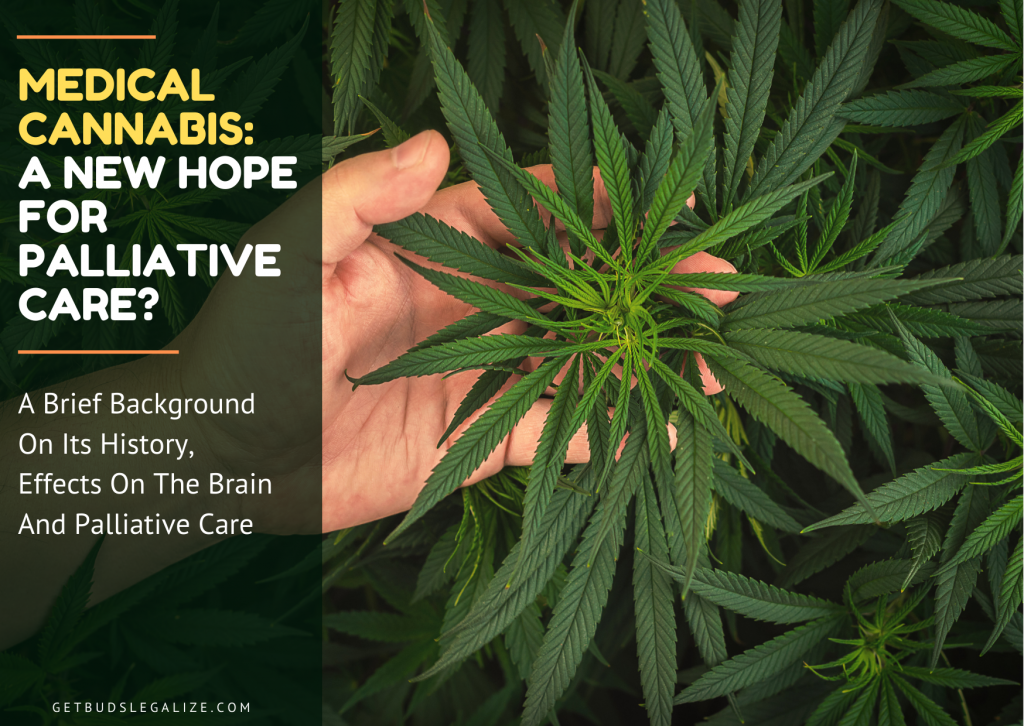Can Cannabis Replace Opioids? Exploring the Use of Cannabinoids as a Substitute for Prescription Drugs
Opioids are a class of drugs that are commonly prescribed for pain relief, but they also have a high potential for abuse and addiction. According to the National Institute on Drug Abuse, more than 130 people die every day in the United States from opioid overdose, and the economic burden of opioid misuse is estimated at $78.5 billion a year.
Cannabis, on the other hand, is a plant that has been used for thousands of years for recreational and medicinal purposes. Cannabis contains hundreds of compounds, some of which have analgesic, anti-inflammatory, and neuroprotective properties. Cannabis is also considered to have a lower risk of dependence and overdose than opioids.
But can cannabis replace opioids as a safer and more effective alternative for pain management? In this blog post, we will explore the use of cannabis as a substitute for prescription drugs, examining data availability, scientific evidence, and the benefits and harms of its use as a viable alternative for chronic pain relief.
How Does Cannabis and Opioid Work in the Body?
Both cannabis and opioids work by interacting with receptors in the brain and spinal cord that are involved in pain perception and modulation. However, they have different mechanisms of action and effects.
Opioids bind to opioid receptors, which are part of the endogenous opioid system. This system is responsible for regulating pain, mood, stress, reward, and other functions. When opioids bind to these receptors, they block the transmission of pain signals and produce euphoria, sedation, and relaxation.
Cannabis contains two main types of cannabinoids: tetrahydrocannabinol (THC) and cannabidiol (CBD). THC is the psychoactive component that causes the high associated with cannabis use, while CBD is non-psychoactive and has anti-inflammatory and neuroprotective effects. THC and CBD interact with cannabinoid receptors, which are part of the endocannabinoid system. This system is also involved in regulating pain, mood, stress, reward, and other functions. When THC and CBD bind to these receptors, they modulate the activity of neurotransmitters and inflammatory mediators that affect pain perception and response.
What Is The Evidence that Medical Cannabis Can Replace Opioid Usage?
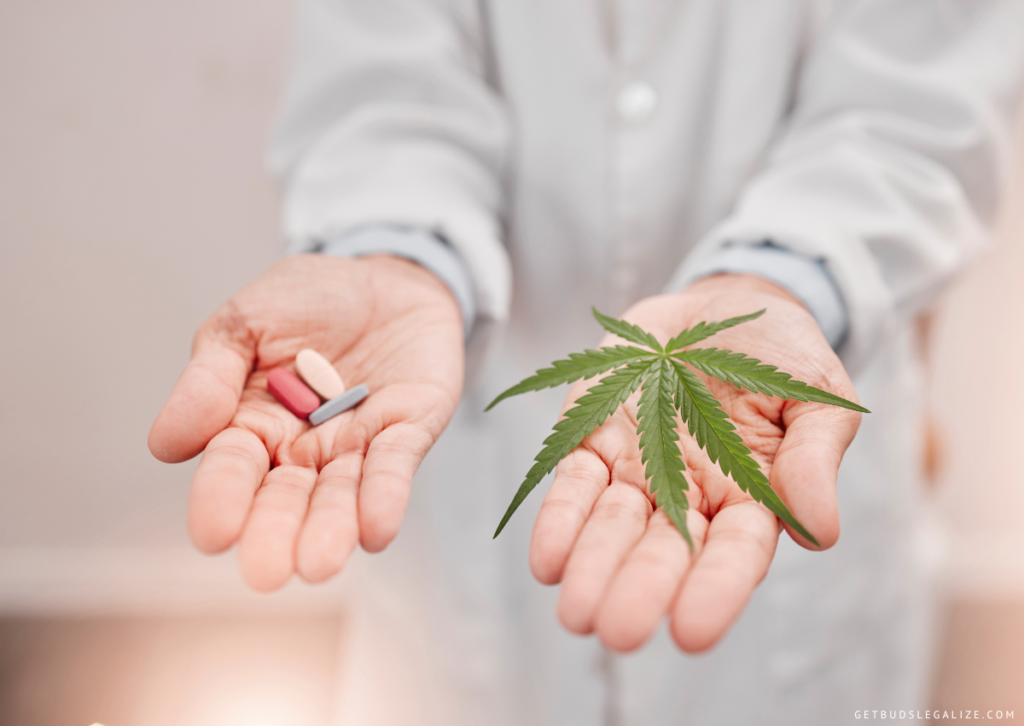
There is growing evidence that medical cannabis can be an effective substitute for opioids in treating chronic pain conditions. Several studies have shown that patients who use medical cannabis report reduced opioid use, lower pain intensity, improved quality of life, and fewer side effects than patients who rely on opioids alone.
For example, a 2019 systematic review published in the Journal of Psychoactive Drugs surveyed 1,000 patients who purchased cannabis from two dispensaries in Colorado. The researchers found that 80% of the respondents reported using cannabis as a substitute for prescription drugs, mainly opioids. The majority of them reported that cannabis was more effective than opioids for pain relief and that they experienced fewer side effects and better quality of life with cannabis.
Another 2019 study published in the Journal of Pain examined the effects of cannabis use on opioid consumption among 1,145 patients with chronic pain who were enrolled in Canada’s medical marijuana program. The researchers found that over a 12-month period, patients who used cannabis had a 64% reduction in their average daily opioid dose, compared to a 12% reduction among patients who did not use cannabis. Moreover, patients who used cannabis were more likely to discontinue opioids or reduce their dose by more than 50%, than patients who did not use cannabis.
What Are The Benefits and Risks of Using Medical Cannabis as a Substitute for Prescription Drugs?
Using medical cannabis as a substitute for prescription drugs may have several benefits for patients with chronic pain conditions. Some of these benefits include:
- Reduced opioid dependence and addiction: Cannabis may help patients reduce their reliance on opioids and lower their risk of developing tolerance, dependence, withdrawal symptoms, or overdose.
- Enhanced pain relief: Cannabis may provide better pain relief than opioids alone or in combination with other medications. Cannabis may also address other symptoms associated with chronic pain conditions, such as inflammation, muscle spasms, insomnia, anxiety, depression, and nausea.
- Improved safety profile: Cannabis has a lower potential for abuse and overdose than opioids. According to the World Health Organization (WHO), there have been no reports of fatal cannabis overdoses in humans. Cannabis also has fewer and milder side effects than opioids, such as constipation, respiratory depression, drowsiness, nausea, vomiting, itching, or impaired cognition.
- Increased patient satisfaction: Cannabis may improve patients’ quality of life by enhancing their mood, sleep quality, appetite, and overall well-being.
- Lower health care costs: Cannabis may reduce health care costs by decreasing opioid prescriptions, hospitalizations, emergency visits, and overdose deaths.
However, using medical cannabis as a substitute for prescription drugs may also have some risks and challenges for patients with chronic pain conditions. Some of these risks include:
- Legal and regulatory barriers: Cannabis is still illegal at the federal level in the United States, and its legal status varies by state. Patients who use medical marijuana may face legal consequences, such as arrest, prosecution, or loss of employment, depending on where they live and how they obtain their cannabis. Patients may also have difficulty accessing medical marijuana due to limited availability, high costs, or lack of insurance coverage.
- Lack of standardization and quality control: Cannabis products vary widely in their potency, purity, composition, and labeling. Patients may have difficulty finding consistent and reliable products that meet their needs and preferences. Patients may also be exposed to contaminants, such as pesticides, mold, or heavy metals, that may pose health risks.
- Potential adverse effects: Cannabis may have some adverse effects, such as impaired memory, attention, coordination, or judgment. Cannabis may also interact with other medications or substances, such as alcohol, that may enhance or reduce its effects. Cannabis may also cause or worsen some medical conditions, such as psychosis, anxiety, or cardiovascular disease.
- Lack of guidance and education: Patients may have limited access to qualified and knowledgeable healthcare providers who can advise them on the use of medical marijuana. Patients may also have insufficient information and education on the benefits and risks of medical marijuana, the optimal dosage and delivery methods, and the potential drug interactions and contraindications.
What Are The Best Medical Cannabis Strains for Pain Relief?
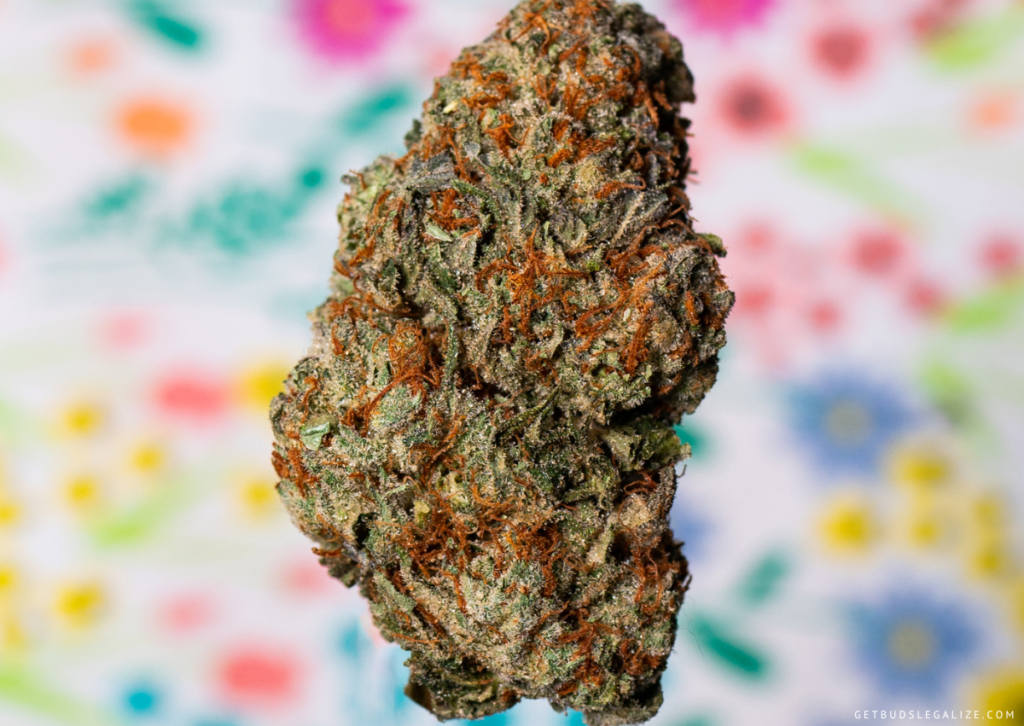
There is no definitive answer to what are the best medical cannabis strains for pain relief, as different strains may have different effects on different individuals. However, some general factors that may influence the choice of a strain include:
- The type and severity of pain: Some strains may be more effective for neuropathic pain (pain caused by nerve damage), while others may be more effective for nociceptive pain (pain caused by tissue damage). Some strains may be more suitable for acute pain (pain that lasts for a short time), while others may be more suitable for chronic pain (pain that lasts for a long time).
- The desired effects: Some strains may have more THC than CBD, while others may have more CBD than THC. THC is more psychoactive and may provide more euphoria, relaxation, and appetite stimulation. CBD is more anti-inflammatory and neuroprotective and may provide more analgesia, anti-anxiety, and anti-nausea effects. Some strains may also have other cannabinoids or terpenes that may modulate the effects of THC and CBD.
- Personal preference: Some patients may prefer certain flavors, aromas, or appearances of cannabis strains. Some patients may also prefer certain delivery methods, such as smoking, vaping, edibles, tinctures, or topical creams.
Some examples of popular medical cannabis strains for pain relief include:
- ACDC: A high-CBD strain that has a 20:1 CBD-to-THC ratio. It is known for its mild psychoactive effects and its ability to relieve pain, inflammation, anxiety, and seizures.
- Blue Dream: A hybrid strain that has a balanced THC-to-CBD ratio. It is known for its uplifting, euphoric, and creative effects and its ability to relieve pain, depression, nausea, and fatigue.
- Harlequin: A sativa-dominant strain that has a 5:2 CBD-to-THC ratio. It is known for its clear-headed, alert, and energetic effects and its ability to relieve pain, inflammation, stress, and mood disorders.
- OG Kush: An Indica-dominant strain that has a high THC content. It is known for its potent, sedating, and relaxing effects and its ability to relieve pain, insomnia, appetite loss, and stress.
- White Widow: A hybrid strain that has a high THC content. It is known for its euphoric, stimulating, and social effects and its ability to relieve pain, depression, anxiety, and PTSD.
Cannabis Treatment Could Be The New Tool to Combat The Opioid Crisis and Help Chronic Pain Sufferers
Cannabis is a promising alternative to opioids for pain management, as it may offer better efficacy, safety, satisfaction, and cost-effectiveness. However, its use also poses some legal, regulatory, quality, safety, and educational challenges that need to be addressed by patients, healthcare providers, policymakers, and researchers.
Patients who are interested in using medical cannabis as a substitute should consult with their doctors and obtain their cannabis from reputable sources. They should also educate themselves on the benefits and risks of marijuana, the optimal dosage and delivery methods, and the best strains for their specific pain condition.
FAQs
Cannabis laws vary widely between states and countries. Some places only allow the use of medical marijuana while others also allow the use of recreational marijuana. Some states have strict regulations on cannabis products, while others have more lenient ones. It is essential to check the laws in your locality before using cannabis.
According to a systematic review of 38 studies, the prevalence of illicit opioid use among pain patients who have opioid prescriptions ranges from 0% to 62%, with a median of 8.7% and a mean of 14.5%. The variation in the estimates depends on several factors, such as the definition of illicit use, the type and duration of pain, the source and method of data collection, and the sample size and characteristics. This use is a complex and multifaceted phenomenon that requires careful assessment and management by healthcare providers.
Our review found mixed evidence. Some studies suggest that the legalization of cannabis may reduce the prescriptions of opioids, overdose deaths, and opioid-related hospitalizations, while others find no significant effects or even opposite effects. The impact of the legalization may depend on the type of marijuana policies (medical vs. recreational), the availability and accessibility of cannabis products, the characteristics of the opioid users, and the quality of the data analysis.
Some of the common symptoms of opioid withdrawal are:
- Anxiety, irritability, and mood swings
- Muscle aches, cramps, and spasms
- Nausea, vomiting, and diarrhea
- Sweating, chills, and goosebumps
- Insomnia and fatigue
- Restlessness and tremors
- Dilated pupils and blurred vision
- Increased heart rate and blood pressure
- Cravings for opioids
Opioid withdrawal can be very uncomfortable and distressing, but it is not usually life-threatening. However, some people may experience severe or complicated withdrawal that requires medical attention. For example, dehydration, electrolyte imbalance, seizures, or heart problems. Therefore, before stopping using it, it is advisable to consult a doctor or seek help from a specialized treatment program that can provide medication, counseling, and support.
Opioids are a class of prescription drugs that are used to treat moderate to severe pain. However, they also have serious risks, such as addiction, overdose, and death. Therefore, it is important to practice harm reduction strategies when using opioids, such as:
- Taking the lowest effective dose and for the shortest duration possible.
- Following the instructions of your health care provider and not sharing or misusing your opioids.
- Using non-opioid pain relievers, such as acetaminophen or ibuprofen, whenever possible.
- Reduce opioid use gradually and under medical supervision.
- Substituting cannabis for opioids if you have a medical condition that qualifies for medical cannabis use and if your health care provider agrees.
These are some of the ways to reduce the risks, but they are not foolproof. If you or someone you know is struggling with opioid use disorder, please seek professional help as soon as possible. You can find professional help by:
- Contact your primary care provider and ask for a referral to a substance use disorder specialist.
- Calling a toll-free helpline, such as 1-800-662-HELP (4357), which is available 24/7 and can connect you to local treatment services and resources.
- Visiting a website, such as https://findtreatment.gov/, can help you locate nearby treatment facilities and programs that offer evidence-based care for opioid use disorder.
Opioid use disorder is a chronic and treatable condition, and recovery is possible with the right support.

